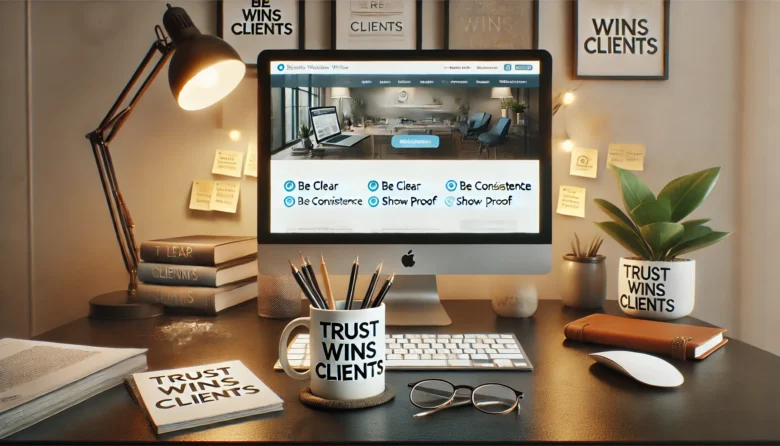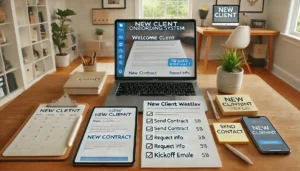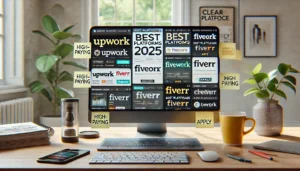Landing freelance writing clients isn’t just about having great samples or competitive rates. At its core, client acquisition is about building trust. Clients don’t hire the “best” writer—they hire the writer they trust the most to understand their brand, communicate clearly, and deliver results.
In a digital world full of noise and competition, how do you build that trust—before you’ve even spoken to a potential client?
It all comes down to psychology. Here’s how to leverage trust-building principles to consistently attract and convert freelance writing clients online.
First Impressions Happen Fast—Design Matters
Within seconds of landing on your website, portfolio, or LinkedIn profile, a potential client has already formed an opinion about you.
What they’re unconsciously looking for:
- Professionalism: Does this person look like they take their work seriously?
- Clarity: Can I quickly understand what they do and who they help?
- Credibility: Do they seem experienced and trustworthy?
Make sure your online presence:
- Has clean, modern design (no clutter or outdated visuals)
- Uses consistent branding (headshot, color palette, tone)
- Clearly states your niche and services
- Includes easy-to-navigate samples and contact info
Design isn’t about being fancy—it’s about creating confidence at a glance.
Social Proof Triggers Safety
One of the strongest psychological motivators is social proof. When people see that others have trusted you—and had a good experience—they’re more likely to trust you too.
Ways to show social proof:
- Client logos (with permission)
- Testimonials with names, job titles, and photos
- Case studies showing the results of your writing
- LinkedIn endorsements for writing, SEO, or communication
- Screenshots of positive feedback from emails or chats (with permission)
Place social proof strategically: near your pricing, next to service descriptions, or in proposals.
The Power of Specificity
Generic claims like “I write great content” don’t build trust. Specifics do.
Compare:
I help tech startups with blog content.
vs.
I help early-stage SaaS companies publish long-form blog posts that improve SEO rankings and reduce churn.
The second version shows understanding, expertise, and clarity—all trust signals. Specificity proves that you’ve done this before and know what matters.
Consistency Builds Familiarity
Psychologically, people trust what feels familiar. That means showing up consistently builds credibility over time.
How to apply this:
- Use the same tone and style across platforms
- Keep your branding aligned: headshot, bio, niche, messaging
- Post regularly on LinkedIn, Twitter, or your blog
- Follow up with leads on a predictable schedule
Being consistent builds the impression that you’re reliable and serious—the kind of person clients want to work with.
Transparency Reduces Resistance
Being upfront about your process, pricing (when appropriate), and expectations makes clients feel safe. When people know what to expect, they’re more likely to move forward.
Ways to increase transparency:
- Outline your process on your website (e.g., discovery → draft → revision → delivery)
- Set clear deadlines and boundaries early
- Share your starting rates or package options
- Let clients know how to contact you and when you’re available
You remove mental roadblocks by answering unspoken questions early.
Show Personality—but Keep It Client-Focused
Clients don’t want robots. They want to work with someone they like, trust, and feel comfortable collaborating with. Letting a bit of your personality shine through your content helps humanize you.
But remember: your content should still be client-centered.
Balance it like this:
- Use a friendly tone in emails, social posts, and your website
- Add a brief personal note to your About page (e.g., “When I’m not writing, you’ll find me testing new coffee recipes or hiking.”)
- Keep your copy focused on the client’s needs, not just your story
A little personality makes you relatable and memorable—two big wins for trust-building.
Create Content That Demonstrates Expertise
One of the best ways to build trust without saying a word is to show, not tell. Publish content that demonstrates your knowledge, style, and reliability.
Ideas:
- LinkedIn posts on writing tips or industry insights
- Blog posts on content strategy, freelancing, or your niche
- Email newsletters with short lessons or behind-the-scenes looks
- Writing samples that mirror your ideal client’s needs
Content marketing doesn’t just attract leads—it pre-sells your expertise.
Use Trust-Boosting Language in Proposals
Even in short proposals or cold emails, word choice matters.
Use:
- “Here’s how I can help…” instead of “I’d like to work with you.”
- “Let me know if this timeline works for you” instead of “When can we start?”
- “I’ve included 2 samples similar to your project” instead of “Here’s my portfolio.”
This kind of language feels helpful and respectful, not pushy or uncertain.
Be Honest About What You Don’t Do
Oddly enough, saying no can build trust. If a client asks for something outside your skill set (like graphic design or web dev), don’t fake it.
Instead:
That’s not my area of expertise, but I can recommend someone great.
I focus specifically on blog content and email sequences—not social media copy.
This positions you as a specialist, not a generalist who takes anything.
Final Thoughts: Trust Leads to Clients
Freelance writing isn’t just about writing—it’s about being trusted to write for someone else’s brand.
The psychology of client acquisition starts with design, continues through content and communication, and finishes with every interaction you have.
When clients trust you, they don’t haggle over price. They don’t ghost you. They don’t micromanage.
They hire you, pay you, and refer you.
Build trust, and the clients will come.



